The fallibility or otherwise of the EVMs (electronic voting machines) has been proven incontrovertibly and so many times, in favour of the EVMs, that one would think that there need not be any controversy whatsoever on their reliability. And yet, as we approach June 4, the day results for the 2024 General Elections would be announced, the manufactured buzz around the fixing EVMs continues unabated.
The Supreme Court recently dealt with the EVMs and after a detailed hearing ruled unambiguously in favour of the infallibility of the process. Apart from the technical safeguards in the EVM unit itself, the process involved in the entire conduct of elections, is what makes the whole EVM fixing theory so laughable. Let us briefly understand the process.
The EVM Unit and How It Works
The EVM consists of three units, namely, the ballot unit, the control unit, and the VVPAT.
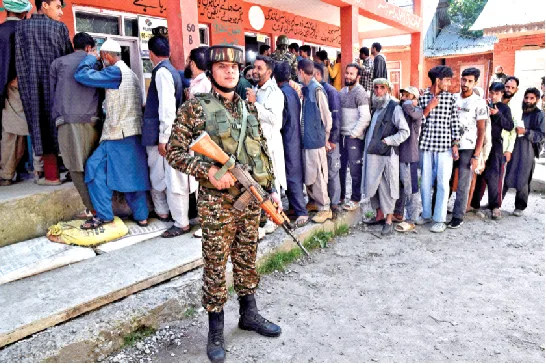
The ballot unit, acting as a keyboard or a keypad consists of 16 keys/buttons one of which the voter has to press when he exercises his choice to vote for any candidate. The keys are political party and candidate agnostic. The serial numbers, names of the candidates and the symbols of the political parties/candidates are physically pasted on the ballot unit so as to enable the voter to identify the corresponding key/button against the respective candidate and the symbol.
EVM: When was it introduced?
The Electronic Voting Machine (EVM), the replacement of the ballot box is mainstay in the electoral process. First conceived in 1977 in the Election Commission, the Electronics Corporation of India Ltd. (ECIL), Hyderabad was assigned the task to design and develop it. In 1979 a proto-type was developed, which was demonstrated by the Election Commission before the representatives of political parties on 6th August, 1980. The Bharat Electronic Ltd. (BEL), Bangalore, another public-sector undertaking, was co-opted along with ECIL to manufacture EVMs once a broad consensus was reached on its introduction.
First time use of EVMs occurred in the general election in Kerala in May, 1982; however, the absence of a specific law prescribing its use led to the Supreme Court striking down that election. Subsequently, in 1989, the Parliament amended the Representation of the People Act, 1951 to create a provision for the use of EVMs in the elections (chapter 3). A general consensus on its introduction could be reached only in 1998 and these were used in 25 Legislative Assembly constituencies spread across three states of Madhya Pradesh, Rajasthan and Delhi. Its use was further expanded in 1999 to 45 Parliamentary Constituencies and later, in February 2000, to 45 Assembly Constituencies of the Haryana Assembly elections. In the State Assembly elections, held in May 2001, in the states of Tamil Nadu, Kerala, Puducherry and West Bengal, the EVMs were used in all the Assembly Constituencies. Since then, for every State Assembly election, the Commission has used the EVMs. In 2004, in the General Election to the Lok Sabha, the EVMs (more than one million) were used in all 543 Parliamentary Constituencies in the country.
The control unit, which is also called the master unit, remains with the polling/presiding officer. The control unit has burnt memory, which is agnostic and does not have the names of the candidates and symbols allotted to the candidates or political parties. Before the ballot unit can be used by a voter, the polling/presiding officer is required to press the ‘BALLOT’ button on the control unit, thereby enabling the voter to cast his vote on the ballot unit. The data stored in the control unit, upon the vote being cast, records and counts the button or the key pressed on the ballot unit. The data, therefore, records the total number of votes as cast by the voters, and the key or the button number on the ballot unit pressed by the voters for casting their vote. After the vote is cast and the control unit has recorded the vote, a loud beep sound confirms the registration of the vote.
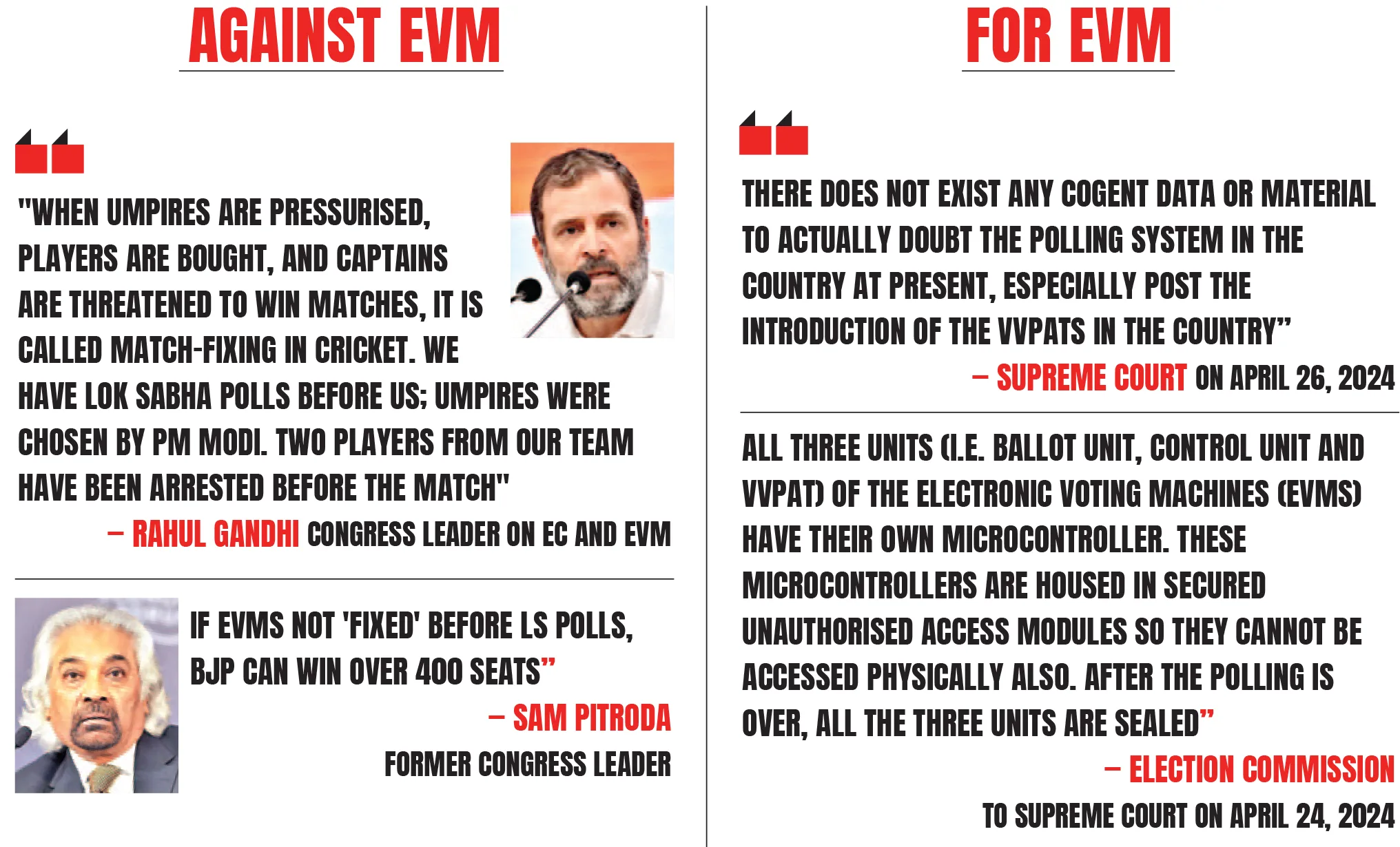
As soon as the voter presses the ‘blue button’ and casts his/her vote on the ballot unit, an LED against the candidate button glows red and the control unit sends the command to the VVPAT. The VVPAT then prints the VVPAT slip comprising of the serial number, candidate name and the symbol.
The VVPAT slip, after being printed, is displayed through the glass window which is illuminated for 7 seconds to enable the voter to know and verify the serial number, the candidate and the symbol for whom they have voted. The VVPAT slip then gets cut from the roll and falls into the box/compartment attached to the VVPAT. The fall sensor in the VVPAT then sends a confirmation to the control unit. The control unit records the vote.
EVMs are standalone machines which cannot be connected to internet. The EVMs do not have any ports so as to enable a person to have access to the burnt memory.
Tamer-proof Technology
The EVM setup is designed in a rudimentary fashion and the EVM units are standalone and non-networked, that is, they are unconnectable to any other third-party machine or input source. In case any unauthorised attempt is made to access the microcontroller or memory of the EVM, the Unauthorised Access Detection Mechanism (UADM) disables it permanently. The advanced encryption techniques and strong mutual authentication or reception capability rules out the deciphering of communication between the EVM units and any unauthorised interaction with the EVM.
The programme loaded in the EVM is key hashed and burned into a one-time programmemable microcontroller chip at the time of manufacturing, thus dispelling any possibility of tampering. All three units of the EVM – ballot unit, control unit and VVPAT, have microcontrollers in which the respective firmware is burned. The burned programme/code is unalterable and cannot be modified after the EVM is delivered/supplied by the manufacturer to ECI.
Every key press of the control unit is dynamically coded, thus making it impossible to decode the signal flowing among the units of the EVM inter se. Further, each key press is recorded with date and time stamp on a real time basis.
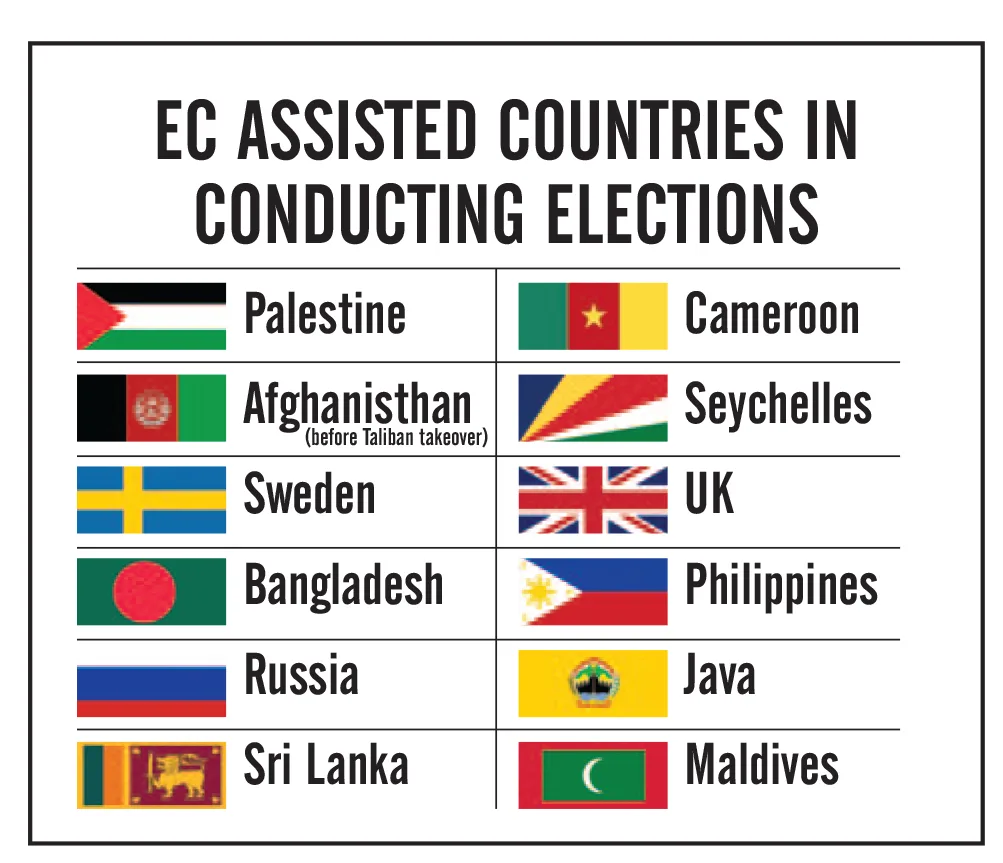
A list of ‘FLC OK’ EVMs is prepared and shared with all the recognised political parties. After check and verification that the EVM is working properly, the control unit of each EVM is sealed with a pink paper seal which is signed by the representatives of the political parties
Apart from the burnt one-time programmable memory, the VVPAT has a flash memory of 4 megabytes. The flash memory of the VVPAT is designed to solely store and recognise a bitmap format file. The VVPAT can store a maximum of 1024 bitmap files containing the symbol, the serial number and name of the candidate. One candidate’s name symbol, and serial number is packed into a single bitmap file of 4 kilobytes. The VVPAT does not store or read any other software or firmware.
The Pre-Election Process
Five to six months before national or state elections are to be held, the required quantity of the EVMs are taken out from the warehouses and stored in the designated strong rooms. The EVMs, after they are put in the strong room, are subjected to First Level Check (FLC) by engineers of the manufacturers in the presence of the representatives of the recognised political parties. The FLC is carried out at the district level under the supervision of the District Election Officer.
During the FLC, 100% or all machines are checked by casting of vote in each of the 16 buttons on the ballot unit 6 times. Further, 5 per cent of the machines are randomly selected by the representatives of the recognised political parties for a higher mock poll by them. Out of the 5 per cent EVMs; 1200 votes are cast in 1 per cent EVMs, 1000 votes are cast in 2 per cent EVMs and 500 votes are cast in 2 per cent EVMs. The voting result indicated in the control unit is tallied with the VVPAT slip count.
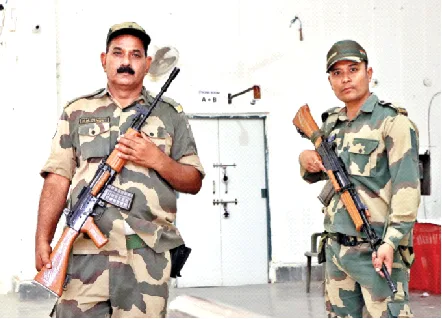
A list of ‘FLC OK’ EVMs is prepared and shared with all the recognised political parties. After check and verification that the EVM is working properly, the control unit of each EVM is sealed with a pink paper seal which is signed by the representatives of the political parties. Thereafter, the plastic cabinet of the EVMs cannot be opened. There is no access to any of the EVM components. Till this stage the VVPAT flash memory is empty and it does not have any data or symbols.
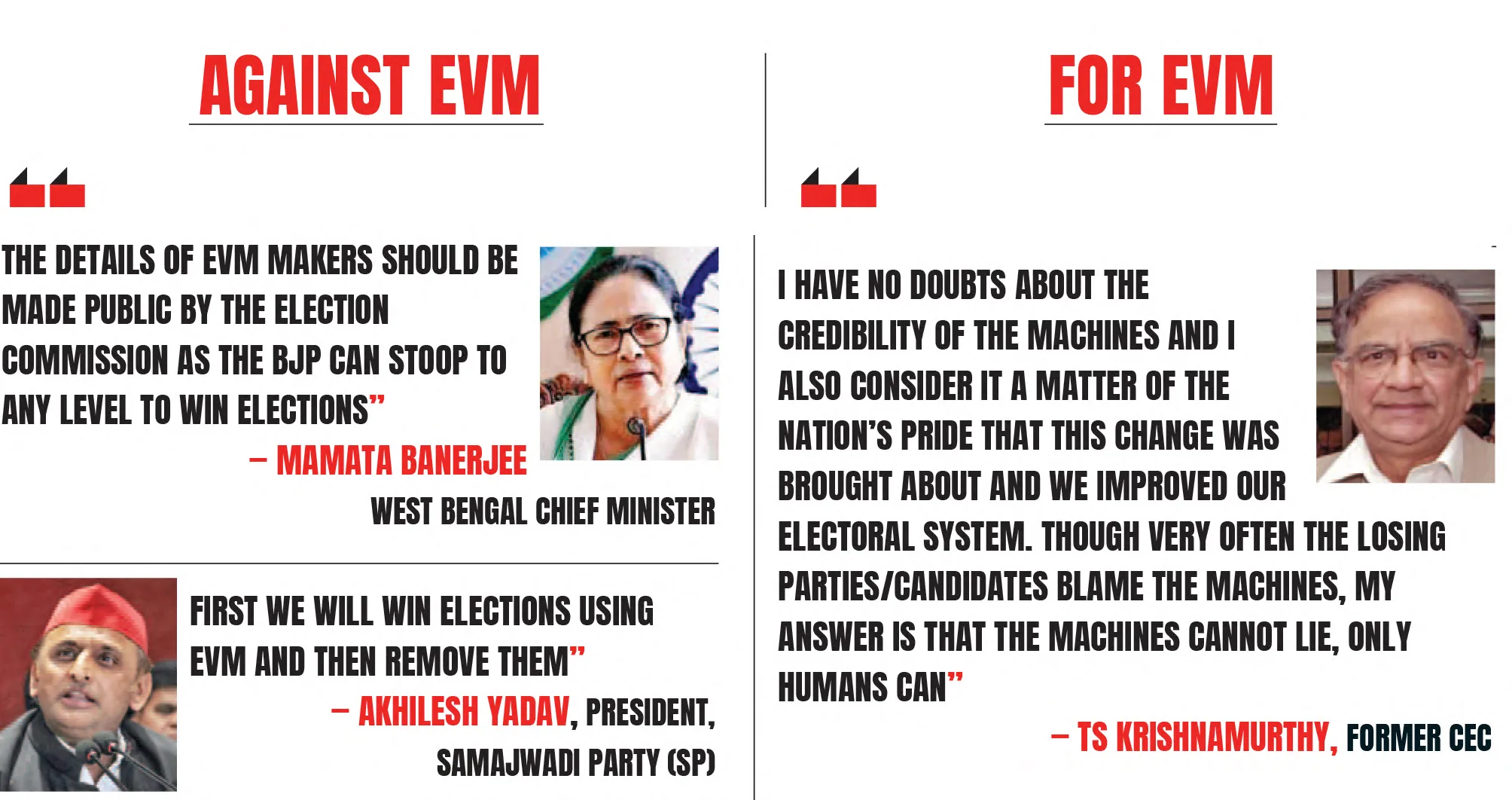
10 per cent of the ‘FLC OK’ EVMs are taken out for training and awareness purpose in the presence of the recognised political parties. The list of the training and awareness units is also shared with the political parties. These training and awareness units are stored separately in a designated warehouse. The EVMs used for training and awareness are thereafter not mingled and are taken back to the designated warehouse
Randomisation Process
To dispel any scenario of bias or prior knowledge, the verified EVMs undergo a two-stage randomization process. Not even the manufacturer of the EVMs would be able to know the allotment of a particular machine for a particular state or constituency. The randomization process is conducted without any human intervention by the EVM Management System software application.
The first randomisation is conducted to allocate the EVMs Assembly constituency/segment-wise. The second randomization is conducted to allocate the machines polling station wise and for the reserve pool. The randomisation process is done in the presence of the representatives of the political parties/candidates and the Central Observers deputed by the ECI.
The polled EVM units are sealed and stored in the strong room in the presence of the candidates or their representatives
The list of EVMs containing serial number as randomly allocated constituency wise and then to a particular polling station are provided to the representatives of the political parties/candidates.
Till this stage, particulars of the candidates or the political parties are not loaded or stored in the VVPAT.
Symbol Loading in VVPAT
About 10 to 15 days prior to the date of polling, the symbol loading process is undertaken by using the symbol loading units. The symbols are loaded in the flash memory of the VVPATs in the form of a bitmap file, comprising the symbol of the political party/candidate, serial number and name of the candidate. A laptop/PC with the symbol loading application is used to create a bitmap file comprising the serial number, the candidate name and the symbol. This file is loaded on VVPAT units by using the symbol loading units.
Authorised engineers of the manufacturers and the District Election Officer are involved in the symbol loading process. The whole process takes place in the presence of the candidates or their representatives and a monitor/TV screen displays the symbol loading process.
It is at this stage that the specific button/key on the ballot unit is allocated to each candidate. The sequence/location of button/key allocated to a candidate of a political party is done in alphabetical order on the basis of the name of the candidate, first for the National and State recognised political parties, followed by other State registered parties, and then for independent candidates. Thus, the sequence/location of the button/key on the ballot unit and the consequent allotment for the purposes of the VVPAT varies from constituency to constituency. For example, candidate or political party ‘A’ may be allocated button ‘1’ in one parliamentary constituency, whereas button ‘1’ may be allocated to political party ‘B’ in another constituency
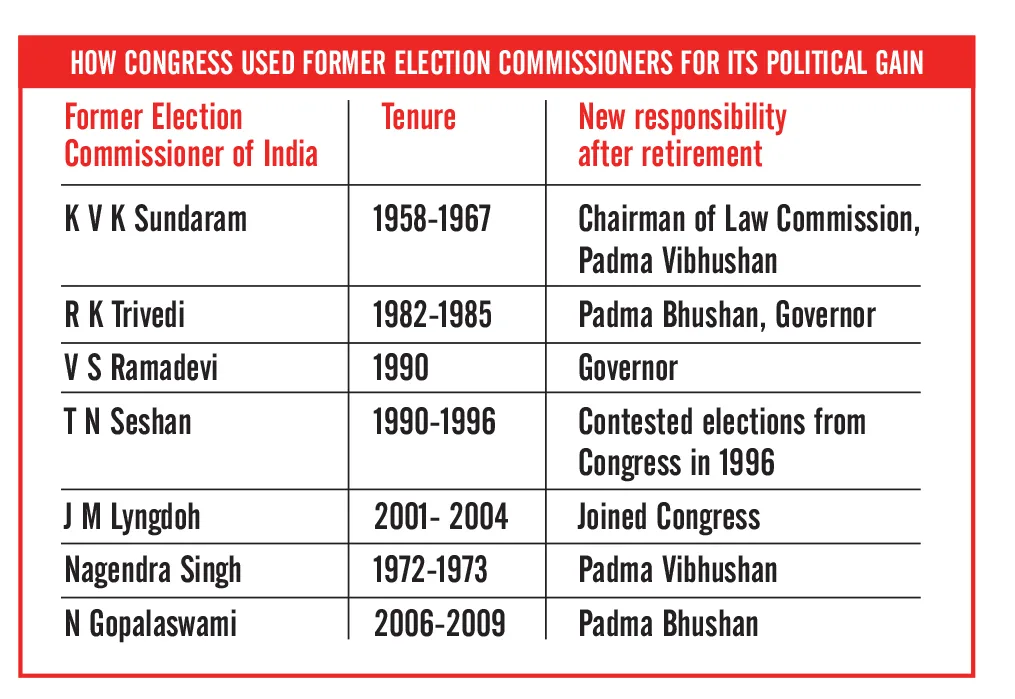
There are 16 buttons/keys on each ballot unit. In case there are more than 15 candidates (one button is for NOTA), more than one ballot units are attached to the control unit. A total of 24 ballot units can be connected to a control unit to make a single EVM set. Therefore, a maximum of 384 candidates (including NOTA) can be catered by the EVM.
The symbol loading process undertaken by using the symbol loading unit cannot alter or modify the programme/firmware in the VVPAT which has been burnt/loaded in the memory. The control unit and the ballot unit are not subjected to the symbol loading process and not touched. The burnt/loaded firmware in the control unit and the ballot unit is and remains candidate and political party agnostic. The control unit acts and functions as the calculator, computing the total votes cast on the basis of the number of times the key/button on the ballot unit are pressed, and the number of times a specific key/button on the ballot unit is pressed 100% of EVMs Checked
After the symbol loading process is completed, all or 100% of the EVMs, including the VVPATs, are checked by casting one vote by pressing each candidate button, including NOTA. A higher mock poll is also conducted in 5% randomly selected units wherein 1000 votes are cast, and the electronic result is tallied with the VVPAT slip count. The candidates or their representatives are also allowed to choose the 5% EVMs and conduct a mock poll.
Once the symbol loading process or the candidate setting is completed, and the mock polls are conducted, the ballot unit of the EVM is also sealed with the thread or plain paper seals. The symbol loaded VVPATs are sealed with address tags. The paper seals and address tags bear the signatures of the representatives of the political parties/candidates.
Therefore, till the symbol loading into the VVPAT is done by using the symbol loading unit, the EVM is blank and has no data/particulars of political parties or candidates. One cannot ascertain and know which button/key in the ballot unit will be allocated to a particular candidate or a political party.
The Polling Day Procedure
On the polling date, one and a half hours before the start of polling, the presiding officer/polling officer takes out the EVMs and conducts a mock poll of 50 votes. The votes are counted electronically. The VVPAT paper slips are also counted and tallied with electronic votes. Each EVM unit is thereupon again sealed with a paper seal of a different colour. Paper seals are also signed by the candidates or their representatives.
The paper seals used from time to time at different stages have a serial number. They also have security features and cannot be replicated. As paper seals are used at different stages, they are given different colours.
The three units of the EVM have to bear the serial number of the unit, name of the constituency, serial number and name of the polling station(s), and the date of poll. Before the commencement of the poll, the presiding officer has to demonstrate to the polling agent and other persons present that no vote has already been recorded in the control unit, the three units bear the label as prescribed and the drop box of the VVPAT printer is empty.
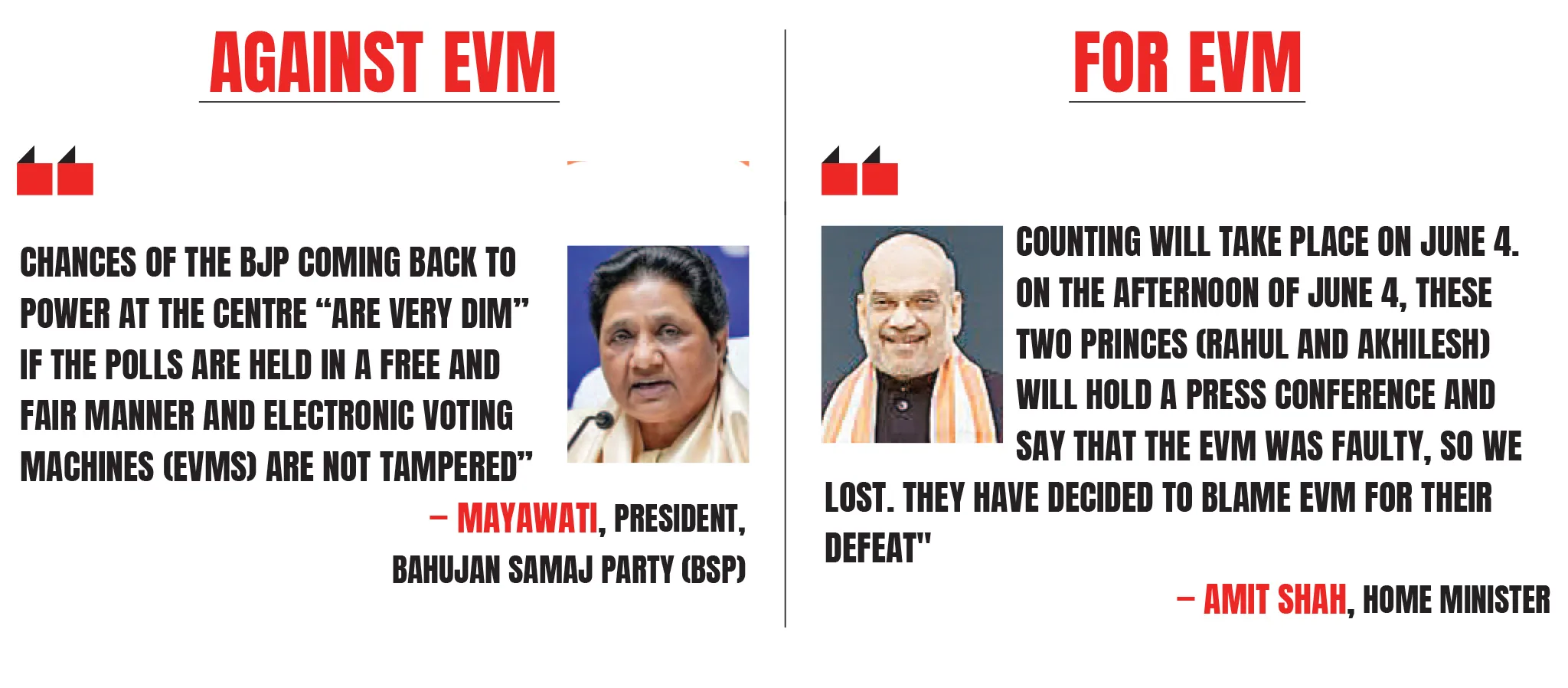
Paper seal is thereupon used for securing the control unit. The presiding officer affixes his own signature on the paper seal and also obtains the signatures of the polling agents who are desirous of affixing the same. The VVPAT and the ballot unit are put in the voting compartment and are connected with the control unit in the manner directed. Before permitting any elector to vote, the polling officer is required to record the electoral roll number of the elector as mentioned in the electoral rolls, signature or thumb impression of the elector, name of the elector and the document produced by the elector in proof of their identification. These particulars are recorded in Form 17A prescribed under Rule 49L of the 1961 Rules. Form 17A is required to be signed by the presiding officer.
As per instructions issued by the ECI, the presiding officer is periodically required to check the total number of votes cast as recorded in the control unit with the data as recorded in Form 17A.
As per Rule 49S, at the close of the poll, the presiding officer is required to prepare an account of votes recorded in Form 17C. The form also requires to give details of the total number of votes recorded per voting machine. This total number recorded in the voting machine should tally with the total number of voters entered in Form 17A minus the number of voters deciding not to vote and the number of voters not allowed to vote.
The details of the paper seals supplied for use, paper seals used, unused paper seals returned to the returning officer etc. are also recorded and entered after the close of the poll.
Under Rule 49S of the 1961 Rules, at the time of close of the poll, the presiding officer furnishes attested true copy of the account of votes recorded in Part I of Form 17C to the polling agents of the candidates. He also retains a receipt of the same from the polling agent.
The polled EVM units are sealed and stored in the strong room in the presence of the candidates or their representatives. The candidates or their representatives are also allowed to put their seals on the lock of the strong room. The strong room is guarded by minimum one platoon of armed security and has CCTV coverage. The candidates or their representatives are allowed to stay and watch the strong room and in case where the entrance to the strong room is not visible, CCTV display facility is provided.
The VVPAT paper slips are in a roll form of 1500 slips. The control unit can store up to 2000 votes. In view of the restriction on the number of VVPAT paper slips, each EVM can be used for casting of up to 1500 votes and not more. The control unit is configured in a way that each vote would take about 15 seconds. Thus, in one minute only four votes can be cast. This prevents and checks bogus voting
Result Day Counting
The presiding officer by pressing the ‘TOTAL’ key on the control unit can ascertain the total number of votes recorded in the control unit. However, the breakup of votes cast in favour of each candidate is not known. On the counting day, in the presence of the candidates/their representatives, the ‘RESULT’ key on the control unit is pressed. The control unit displays the number of times each button/key was pressed in the ballot unit on the polling day, thus depicting the result.
Before start of counting of votes, the serial number of the EVMs and the paper seals affixed on the EVMs are verified with details mentioned in Form 17C and are shown to the counting agents. The total votes displayed by pressing the ‘TOTAL’ button on the control unit is also tallied with the total votes polled as per Form 17C.
The counting is done in the presence of the polling agents/candidates by pressing the ‘RESULT’ button on the control unit. The total votes polled and the total votes polled by each candidate is thereupon displayed on the display panel.
The VVPAT slips of five polling stations per assembly constituency/assembly segment of the parliamentary constituency, are randomly selected and counted. The results are then tallied with the electronic results of the control unit.
Any candidate, or in his absence an election agent or counting agent, as per rule 56(D), can apply in writing to the returning officer to count the printed paper slips in the drop box in respect of any polling station(s).
The returning officer can allow the application in whole or in part, or may reject the application in full if it appears to be frivolous or unreasonable. Every decision of the returning officer is to be in writing and has to contain reasons. If the returning officer decides to allow counting of paper slips, either wholly or in part, he has to do so in the manner prescribed in sub-rule (4) to Rule 56D of the 1961 Rules
As per the ECI guidelines, in case there is any mismatch between the total number of votes recorded in the control unit and Form 17C on account of non-clearance of mock poll data or VVPAT slips, in terms of Rule 56D(4)(b) of the 1961 Rules etc., the printed VVPAT slips of the respective polling stations are counted and considered if the winning margin is equal to or less than total votes polled in such polling stations.
History of VVPAT and EVM Data Match
More than 118 crore electors have cast their votes since EVMs have been introduced. In 2019, about 61.4 crore voters had cast their votes in 10.35 lakh polling stations. 23.3 lakh ballot units, 16.35 lakh control units and 17.40 lakhs VVPAT units were used in the 2019 General Elections.
For the purpose of the 2024 General Elections, 10.48 lakh polling stations have been established to enable 97 crore registered voters to cast their votes. 21.60 lakh ballot units, 16.80 lakh control units and 17.7 lakh VVPAT units have been made ready for being used.
ECI has conducted random VVPAT verification of 5 polling booths per assembly segment/constituency for 41,629 EVMs-VVPATs. Further, more than 4 crore VVPAT slips have been tallied with the electronic counts of their control units.
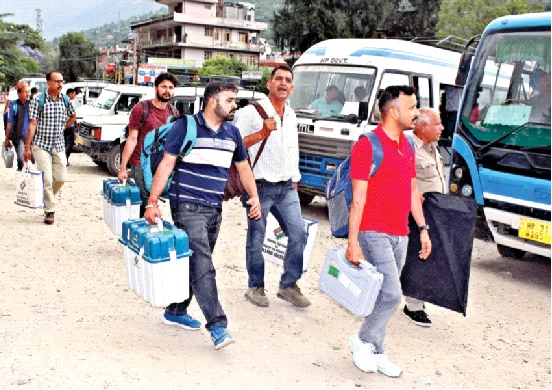
Not even a single case of mismatch, (except one which will be later detailed), or wrong recording of votes has been detected.
Returning officers have allowed VVPAT slip recounting under Rule 56D in 100 cases since 2017. The VVPAT slip count matched with the electronic count recorded in the control unit in all cases
In the 2019 Lok Sabha Elections, 20,687 VVPAT slips were physically counted, and except in one case, no discrepancy or mismatch was noticed.
The discrepancy during mandatory verification of VVPAT slips happened in polling station No. 63, Mydukur Assembly Constituency, Andhra Pradesh during the 2019 Lok Sabha Elections. On verification, it was found that the discrepancy had arisen on account of failure of the presiding officer to delete the mock poll data. Thus, except in one case of human error, where also procedure existed to take care of it, not once has VVPAT and EVM count have mismatched.
In the 2019 Lok Sabha Elections, 20,687 VVPAT slips were physically counted, and except in one case, no discrepancy or mismatch was noticed
Additionally, an elector can also raise a complaint regarding the mismatch between the name and symbol of the candidate shown on paper slip generated by the VVPAT and the vote cast by him / her on the ballot unit. There have been, so far, 26 such cases in which the electors have complained under Rule 49MA. There is not even a single case in which any mismatch or defect was found.
Therefore, in over 118 Crore votes cast so far using EVM, not one case of fraud or fixing has occurred. That is as large a sample as anyone can ever get in human history is authentically assert that EVMs are tamper proof!
Summary of EVM-VVPAT Benefits
- It runs on battery/power-packs and does not require any external power supply.
- Voting is done by pressing a button thereby negating a scenario of invalid vote akin to an invalid paper ballot.
- It does not permit more than 4 votes per minute, thereby deterring and disincentivising booth capturing.
- After the pressing of ‘CLOSE’ button on the control unit, there is no possibility of voting.
- It ensures quick, error-free and mischief-free counting of votes.
- Voter is instantly able to verify the recording of their vote through the beep sound. Further, the VVPAT slip helps verify that the vote casted is recorded correctly.
- By pressing the ‘TOTAL’ button on the control unit at any time, the total number of votes polled up to the time of pressing the button is displayed, without indicating the candidate-wise result of votes.
- The original program, which is political party and candidate agnostic, is ported on to the microcontroller of the EVM21 during the manufacturing at the factory. This process is done way before the elections and it is impossible to know the serial number of any candidate in advance. Thus, it is not possible to pre-program the EVM in a spurious manner.
The Absurdity of the Conspiracy Theorists
Let us first record the total number of times political parties or candidates are involved in various stages of the EVM process – from factory to result counting.
- 6 times political party representatives are present when various testing, randomization or other technical functions are being carried out in the VVPAT-EVM units.
- 3 times the VVPAT-EVM units, complete with signatures of various EC functionaries are shared with political parties including the list of 100 per cent checked EVMs beyond which no other EVM can be used.
- 5 times, at various stages the candidates or their representatives sign on the seals that lock the EVMs.
Despite such stringent procedures, let us for a moment presume that there is still a conspiracy between the BJP, as the opposition alleges, and the ECI to manipulate the election results.
What would this conspiracy entail?
- In the seven phase that would poll, there would be 542 seats that would go to poll (one was decided unanimously).
- In total there would be about 10.45 lakhs polling stations in these constituencies
- Each seat has dozens of candidates who are allowed to have polling agents in each polling station
- There are a total 8,360 candidates in fray in 2024 Lok Sabha elections. That is 15.4 candidates on average per seat
- Each candidate is allowed 3 polling agents per polling station
- Thus, there would be about 45 polling agents per polling station
- For 10.45 lakh polling stations that would be 470 lakh (4.7 crore) polling agents
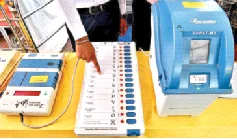
But let’s be realistic and assume
a. Independent candidates do not have 3 polling agents at each station
b. Only top 2 parties have polling agents in each station and on an average 1 per person for each of
rest is present
c. Even the top two parties have only one agent per polling station.
- This would still mean 3 polling agents per station.
- For 10.45 lakh polling stations, that would mean 31 lakh polling agents who sign the sealing papers of EVM.
- Apart from the 31 lakh polling agents who sign every sealed EVM / VVPAT unit, the presiding officer in each polling station also signs the unit. That is 10.45 lakh presiding officers.
- A total of thus about 42 lakh people sign the EVM sealing papers at end of elections.
- This is over and above the people who have signed the EVMs during the various stages of manufacturing, demonstration and testing.
If conspiracy theorist is to be believed then –
Of the over 31 lakh polling agents, apart from candidates themselves, who have each inspected:
a) Every form 17C given at every polling station by ECI
b) Observed EVERY voter who has voted and NOT complained about discrepancy between her vote and VVPAT slip. NOT even one complaint.
c) Has available the exact voters list per polling station (and by aggerate for every constituency at candidate level).
So according to the Congress party think tanks, likes of Kapil Sibal and other assorted members of the Congress ecosystem, over 42 lakh people – polling agents plus presiding officers (actually would be in range of almost a crore) are in conspiracy with PM Modi / BJP to defraud the election.
If about 1 Crore people are actively colluding, and yet there is not a shred of evidence as to how they are colluding, or indeed why they are colluding (why would polling agents of Congress or CPM collude with BJP), then what would we call those who float such absurd conspiracy theories?


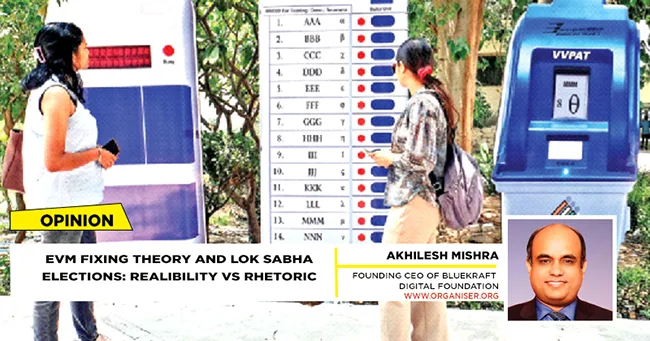
















Comments